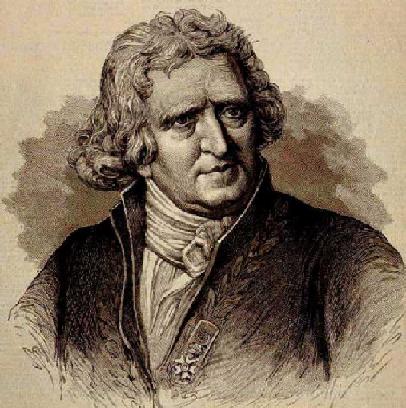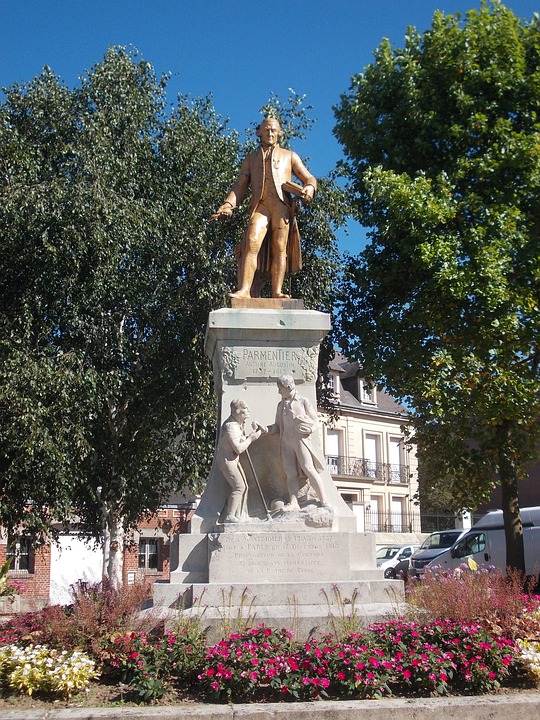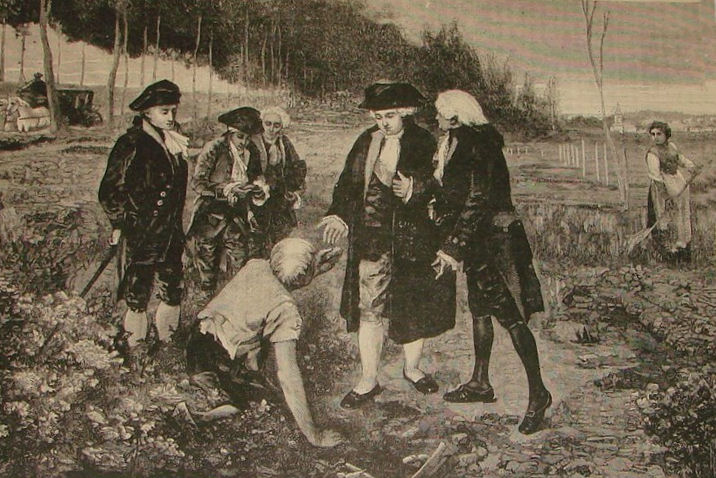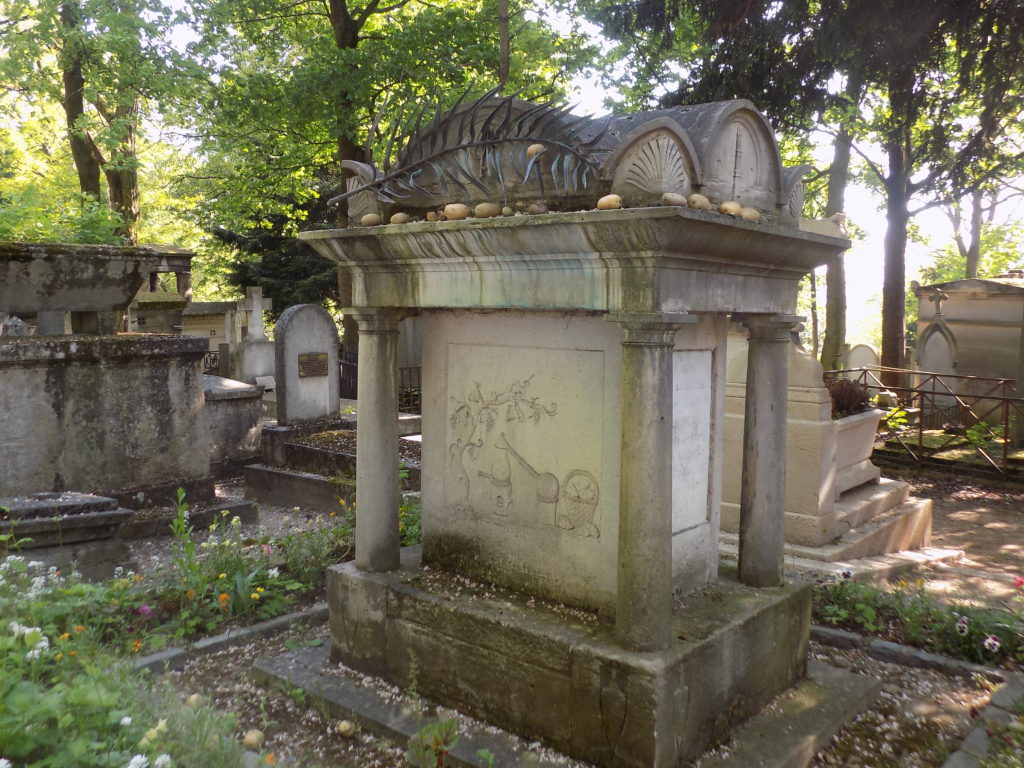An article in The Guardian reports 70,000 tombs in Père-Lachaise. This is my final exploration of the life of one of those 70,000 people.
Purée Parmentier.
Avid cooks among you might recognize the name Parmentier from Potatoes Parmentier. (Here’s a basic recipe for those who are not avid cooks.) In France, Parmentier and potatoes are (or should be) synonymous.
Antoine-Augustin Parmentier was born on 12 August 1737 in the small town of Montdidier in the Hauts-de-France région about 100 kilometers northeast of Paris. His father died when he was young but his mother managed to teach him rudimentary Latin. This basic education let him begin an apprenticeship with the local pharmacist at age thirteen. After five years, he left Montdidier for Paris where he continued his pharmaceutical studies with a distant relative.
Soon after he arrived in Paris, a true global war began. This was the Seven Years War – called by some historians World War Zero.
(The core of this conflict was Austria’s efforts to recover Silesia from the Prussians but the war involved all the great powers of Europe and spread over five continents. The Kingdom of Great Britain, Prussia, Portugal, Hanover, and other German states formed one bloc while the Kingdom of France joined with the Austrian and Russian Empires, Bourbon ruled Spain, and Sweden on the other side. French and English skirmishing over their colonies in the French and Indian War that began in 1754 drew in the Americans.
Meanwhile, in India, elements of the disintegrating Mughal Empire were trying, with assistance from France, to stave off Britain’s attempt to add Bengal to its ever-growing empire. In 1758, an American merchant, Thomas Cumming, convinced William Pitt, then Prime Minister of Great Britain, to attack the French settlement of Saint-Louis (also called Ndar) in Senegal. The British captured it easily drawing Africa in as the fourth involved continent.
In the sixth year of the war, the fighting spilled into South America where Spanish forces, led by the governor of Buenos Aires, led a campaign against the Portuguese in Southern Brazil and Uruguay. The war ended with the 1763 Treaty of Paris.)
[Image of Parmentier 1875 magazine illustration.]
At 24, Parmentier joined the Army where he served as a pharmacist. The Prussians captured him and during his imprisonment fed him only potatoes. One might think Parmentier saw this as psychological torture. Potatoes were regularly consumed elsewhere on the continent but for the French they were hog feed. In fact, they considered the potato so loathsome that in 1748 the government, convinced they caused leprosy, banned growing them. (We certainly can’t know what Parmentier thought but we can be certain that torture wasn’t the Prussians’ intent. Potatoes were a staple of their diet and they also grew them to circumvent the French blockade of grain imports.)
But Parmentier was a man of science and he began doubting the government’s assertion. After all, he’d eaten all those potatoes and hadn’t fallen ill with leprosy or any other affliction, for that matter. (Parmentier isn’t the first person we’ve encountered on this journey whose experiences as a prisoner of war had a profound impact on his life’s work. Recall the composer Olivier Messiaen.) He’d also observed that not only did the Prussians fare well eating potatoes but that the tuber seemed easy to grow. Though lacking scientific proof, he returned to France convinced of the potato’s value. (Seven years later Antoine Lavoisier – best remembered as the father of modern chemistry – did his first studies linking metabolism and respiration theorizing that nutrients in food played a role in metabolism.)
Early in the 1770s, Parmentier began publishing papers on the nutritional value of potatoes, including Enquête sur les légumes nourrissants qui en temps de nécessité pourrait être substituée pour la nourriture ordinaire (Inquiry into Nourishing Vegetables That In Times Of Necessity Could Be Substituted For Ordinary Food) and Examen chimique des pommes de terre, dans lequel on traite des parties constituantes du froment et du riz (Chemical examination of potatoes dealing with the constituting parts of wheat and rice). A knack for pithy titles he had not. In truth, it’s unlikely that even pithier titles would have influenced public opinion.
Now the story gets interesting. Parmentier was convinced of the potato’s value and determined to elevate it to become a staple of the French diet. His efforts became the stuff of urban legend.
One story claims that he planted a field of potatoes in a garden near Paris (or Montdidier or Sablons) hiring a guard to patrol the garden during the day creating the impression he was growing something important. Of course, curiosity got the better of the local peasants and farmers. Some went in at night, dug up the potatoes, and replanted them. Once some peasants stole a few potatoes others imitated them. This eventually spread Parmentier’s crop among the inhabitants of neighboring villages, thereby changing the perception of the potato and erasing old prejudices against the pomme de terre.
[Statue of Parmentier in Montdidier – Source: pixabay.]
Anothr tale involves the ill-fated Louis XVI and Marie Antoinette. Parmentier knew that having the King’s and Queen’s support would encourage Frenchmen everywhere to eat potatoes so his fertile mind concocted a plan to gain their support. He went to Versailles and, seeing the royal couple walking in the gardens, presented each with a potato flower. The Queen placed the purple flower in her hair, and the King put his in his buttonhole. The king asked Parmentier about the flower. The pharmacist was so effusive the king granted him a small plot to cultivate potatoes on the royal estate. Other courtiers followed suit and began cultivating potatoes on their estates. The once demeaned potato became popular not only among the poor, but also among the wealthy.
This 1886 engraving (from nobility.org) purports to show Parmentier and Louis XVI in a potato garden.
A third version combines elements from the first two.
These stories are amusing and likely apocryphal. There’s evidence that farmers in the north of France regularly grew and ate potatoes to stave off starvation. On the other hand, we have to keep in mind that famine in the late 1780s was a principal factor in sparking the French Revolution and, given the French anathema toward potatoes, its cultivation in and around Paris might have been less common. It should come as no surprise that when Parmentier, at the behest of Louis XVI, published another paper in 1789 about cultivating and using potatoes it was again largely ignored.
The real rise of the potato seems to have come in 1794 when a certain Madame Merigot published a potato cookbook and potatoes became widely accepted as “food for the revolutionaries.”
In 1799 France saw the rise of Napoléon Bonaparte. The apparently apolitical (or supremely politically skilled) Parmentier had previously consorted in some manner with the royals but had also managed to hold the position of Inspector General of the Health Service for the Revolutionary government since 1796. Somehow he also quickly became a favorite of the soon to be emperor. In 1800, Bonaparte appointed him first pharmacist of the armies. Later that year Parmentier became chairman of the Society of Pharmacy in Paris.
Parmentier persuaded Napoléon that potatoes could help make the Republic self-sufficient and cultivation and consumption of potatoes increased by 15 percent in just a few years. Parmentier’s seemingly quixotic quest begun decades earlier had finally succeeded.
Stop by his grave in Père-Lachaise and you are likely to see it adorned not with pebbles, flowers or other offerings.
People pay Parmentier their respects by leaving potatoes.
The pedantic coda.
Per the city of Paris website, more than 1,000,000 people have been buried at Père-Lachaise and, if one includes those interred in the ossuary behind the Aux Morts monument, that number more than triples. It’s unlikely that everyone buried there has a compelling biography so perhaps I was fortunate in exhuming six such stories from history’s tomb. Certainly, the handful of monuments that drew my attention, such as that of Félix de Beaujour, are far from representing a statistically significant sample of the cemetery’s 70,000 “ornate tombs of the rich and famous” as described by Lonely Planet.
Of course, I’m not alone in finding the graves in Père-Lachaise intriguing. In 2015, Huffington Post published the “9 Most Haunting Graves in Paris’s Pere Lachaise Cemetery”. Some of the graves in that story are of people whose names most of you will immediately recognize. Other names will be less familiar. But none of the graves in that story are among the six (eight if you want to include Abélard and Héloïse) I chose to highlight.
It’s my hope that you’ve been not only enlightened and entertained but had your curiosity aroused. If you ever visit the cemetery – either physically or virtually – you certainly should stop at the grave of Chopin or Édith Piaf or Jim Morrison or any of the celebrated people buried there who interest you.
But when that unusual monument catches your eye or you see a name that might be vaguely familiar perhaps you’ll decide to explore that person’s story. That journey can be fascinating.



